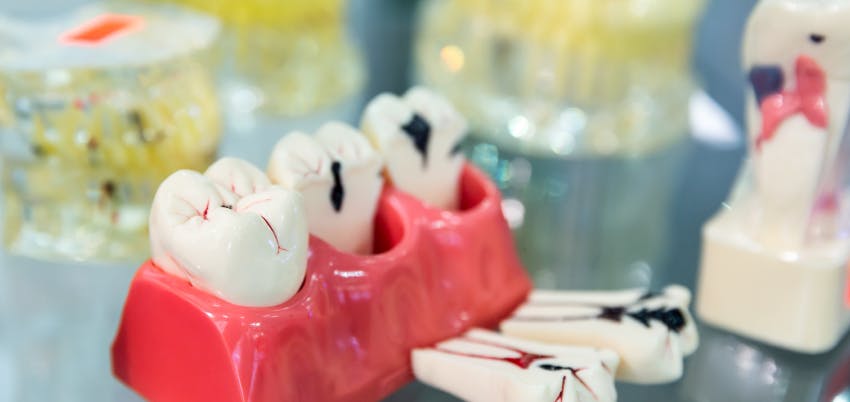
Do you have dental fissures? - Detect and treat them on time
by Wildsmile
A dental fissure can be so small that it is imperceptible to the professional looking for it trying to detect the causes of the dental pain of his patient. That is why, when it does not identify, a dental x-ray is used.
The dental fissure is usually a crack that makes its way over the surface or side face of the tooth or molar here. However, sometimes the fissure comes in the form of very small holes.
Next, we will address the origin and destination of a dental fissure, as well as the treatments to eliminate this latent problem from your mouth that you can solve.
Causes and symptoms of fissures
The causes for which a tooth can crack are the following:
Endodontics
When a dental piece is devoid of its nerve, dentin becomes dehydrated and, therefore, weakens. Another aspect against endodontic teeth is that they lack their natural crown. Something that can happen is that while the patient waits for the crown that is going to protect his tooth to be manufactured, he bites very hard on the tooth that is barely protected by a temporary restoration, which makes it possible to receive the impact of the bites much more intensely. This situation could easily produce a fissure in the root.
Removal of a bolt
When removing the bolt, the risk of cracking increases because the root walls weaken in the process of preparing to receive the bolt.
Bruxism
On the one hand, the habit of bruxar wears the surface of the tooth, which makes it a piece more vulnerable to fissures. On the other hand, the same pressure of the bruxation can produce a dental fissure spontaneously.
Accidents
A healthy tooth is also susceptible to cracking when we engage in activities such as chewing ice, candy, hard nougat or other foods of notorious hardness.
Kinds of Dental Fissure
There are five kinds:
- - Line: they are cracks that only affect the enamel.
- - Fracture at the cusp: the initial crack comes to fracture the piece and the fissure reaches the dentin.
- - Tooth cracked: it consists of a crack over the dental piece, without this being derived in the separation of this in fragments.
- - Split tooth: the crack drifts into the partition of the tooth into fragments due to the depth of the crack.
- - Vertical fracture in the root: the crack occurs along the root of the tooth, so a diagnosis is not possible through the examination in the office.
Symptoms in Dental Fissures
Having a dental fissure is not necessarily synonymous with being a victim of terrible pain. Moreover, this only occurs when the tooth is really split with fragment separation. A simple dental sensitivity could be announcing the presence of a fissure. Just suspect that you may have a cracked tooth, don't hesitate to schedule a consultation with your dentist, since the consequences of an untreated fissure could be devastating, so take in account the following symptoms:
- - Chewing pain
- - Sudden pain
- - Tooth sensitivity
- - Bite Discomfort
Consequences of cracks
- - Dental pulp irritation
- - Cavities
- - Total breakage of the dental piece
- - Loss of the dental piece
Dental Fissure Treatment
Dental fissures are treated according to their class. The treatments currently available are:
- - Sealed
- - Endodontics and crown
When the fissure only affects the enamel, it reaches with a seal. However, when the crack reaches the dentin, the procedure to follow is to remove the nerve and place a crown so that it is one of the parts that were separated by the fissure.
There is a case of fissure that cannot be treated. This is the vertical fissure that affects from the crown to the root. When this occurs, the only solution is the extraction of the piece.
Want to learn more about this?
Contact us
Your contact request is registered. We will contact you as soon as possible.
Lorem ipsum dolor sit amet, consectetur adipisicing elit. Adipisci alias aliquid amet commodi dolor, dolore doloremque dolores fugit quod repellat.
 ENG
ENG






